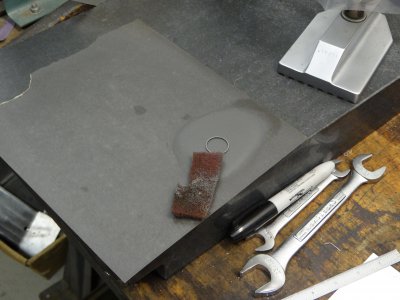- Joined
- Apr 28, 2014
- Messages
- 3,590
Black Coffee. and before I get flamed - try it. Carl the tool maker at my first job had me do it on the three we had in the tool room.
It started the first week when he jokingly had me fetch a large mug of coffee. I thought it was for him but when I returned with the java
he handed me some white rags and showed me.
Also any sort of large temperature variance in the shop and a larger surface plate takes a long time to adjust, they don't like swings in temp.
_Dan
It started the first week when he jokingly had me fetch a large mug of coffee. I thought it was for him but when I returned with the java
he handed me some white rags and showed me.
Also any sort of large temperature variance in the shop and a larger surface plate takes a long time to adjust, they don't like swings in temp.
_Dan


